By now you have probably read many articles about the romantic city of Da Lat. Some articles outline a guide, some give you a feeling. In this article, we are going to explore the many points of interest in Da Lat, places where your camera will not even have to work it’s magic because the landscape is so spectacular. I have compiled all my best suggestions, places to capture the heart of Da Lat, to add to your collection of the collective heart of Vietnam. And to do so, it is not only about visiting, but also about knowing the beautiful stories behind these places.
Da Lat and Its Surrounding Nature
The Langbiang Mountain
Tales claim that the K’ho people were united people created from different tribes, some even had critical conflicts to settle before they came together. Once, the head of the Lat tribe (named K’lang) and the daughter (named H’biang) of the head of Chil tribe fell in love with one another, yet were forbidden to make their love official due to the tribes’ long-lasting conflicts. The couple committed suicide to oppose this unreasonable conflict. After their death, the head of the Chil tribe felt guilty and decided to reunite the tribes into one clan called K’ho that exists even today.
Lang Biang Mountain got its name from this couple. It is under the foot of this mountain that you can visit the K’ho people in Cu Lan Village and have a cultural exchange. However, if you only have several days in Da Lat, I will recommend other select areas in the center of town for the set of your photo shoot.
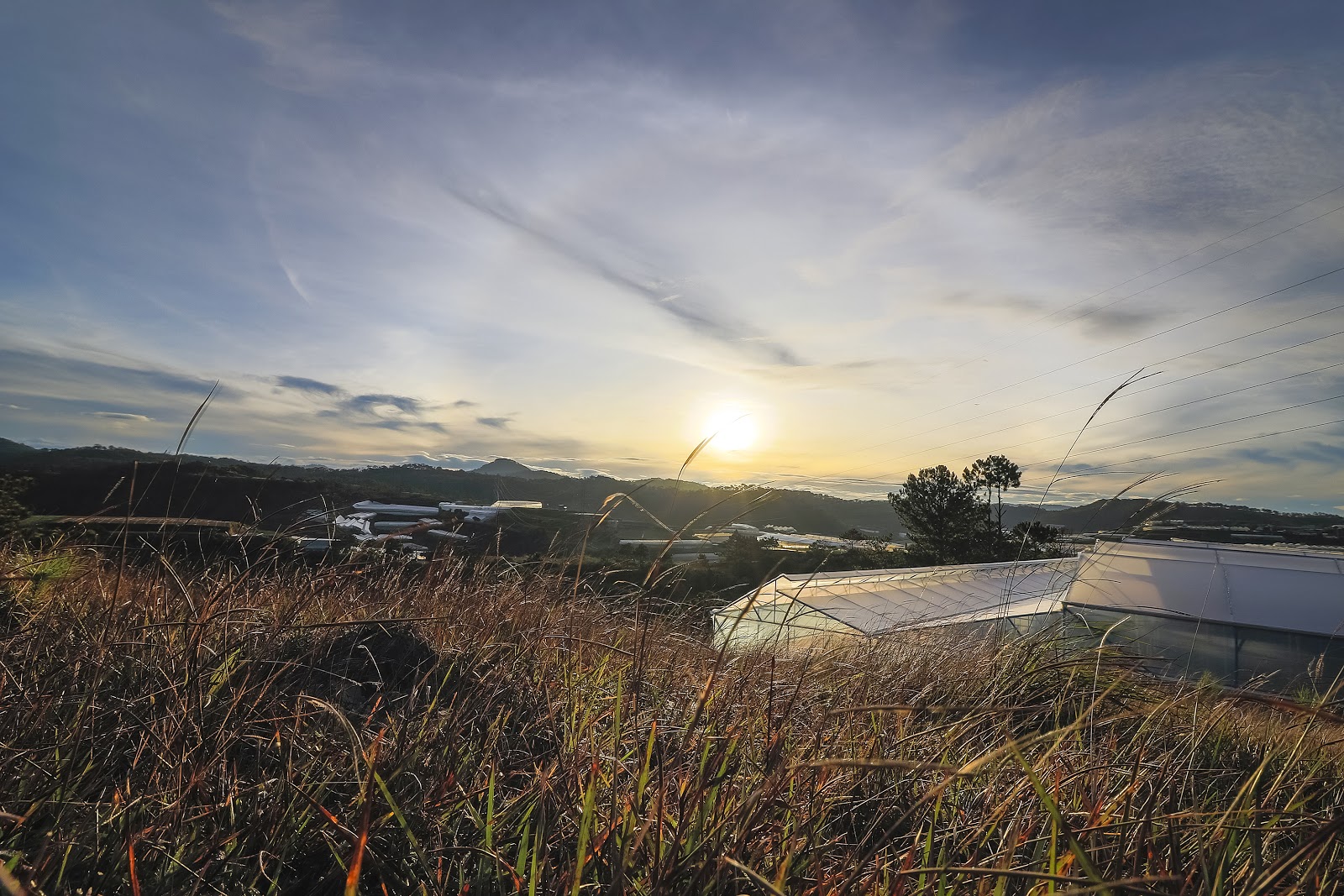
Lang Biang Mountain is one of the highest peaks in Da Lat that people can reach. Hire a Jeep (and don’t forget to ask the driver to drive slowly). From here, nature opens up beneath your eyes with boundless hills and fields. The Golden Stream starts from a mysterious point and holds the land together with its gentle water flow. Get to the peak in the early evening and enjoy the magnificent sunset gently touching the tiny plants below your sight, while inhaling the foggy breeze hovering around your woolen coat. Rejoice in the sun disappearing behind the mountain and not a skyscraper.
Secret Garden Filming Studio
This studio is located right inside the city, a must for those of you longing for a “Beauty and the Beast” setting for your photos. This studio takes you into a European fairy tale landscape with the charm of a natural lake stretching quietly among the pines hill. And don’t feel disappointed with the lack of Vietnamese influence. Da Lat with its temperate nature was once considered a mini Paris that serves the aesthetic sense of the Westerners.
In addition to beautiful nature, what drew me to this studio is the wooden bridges and floating sails that sure make fantastic photography backgrounds. You don’t need to be a romantic couple to make use of this place! With a group of friends, dress up in clothes meant for the ancient times and take advantage of early morning rays in Secret Garden. You can tell your grandchildren, “hey, we got in a time machine and visited mother nature in Cinderella’s time.”
Address: Trieu Viet Vuong street, Da Lat City
The Pongour Waterfall
How amazing is the wild nature of Vietnam? Among the heaven of waterfalls in Da Lat, Pongour Waterfall is the king. This Waterfall is 50 kilometers to the south of Da Lat. It has another name, Seven Layer Waterfall, with a height of 240 meters. There only exists one tale about this waterfall, a short tale about the female head of the tribe named Kunai. She could break wild beasts. Kunai was most famous for her restless efforts in protecting the K’ho people from the invader’s abuse and building the life of the K’ho people in this area. The tale says, after her death, her four rhinos committed suicide as a symbol of love and loyalty for their respectful owner.
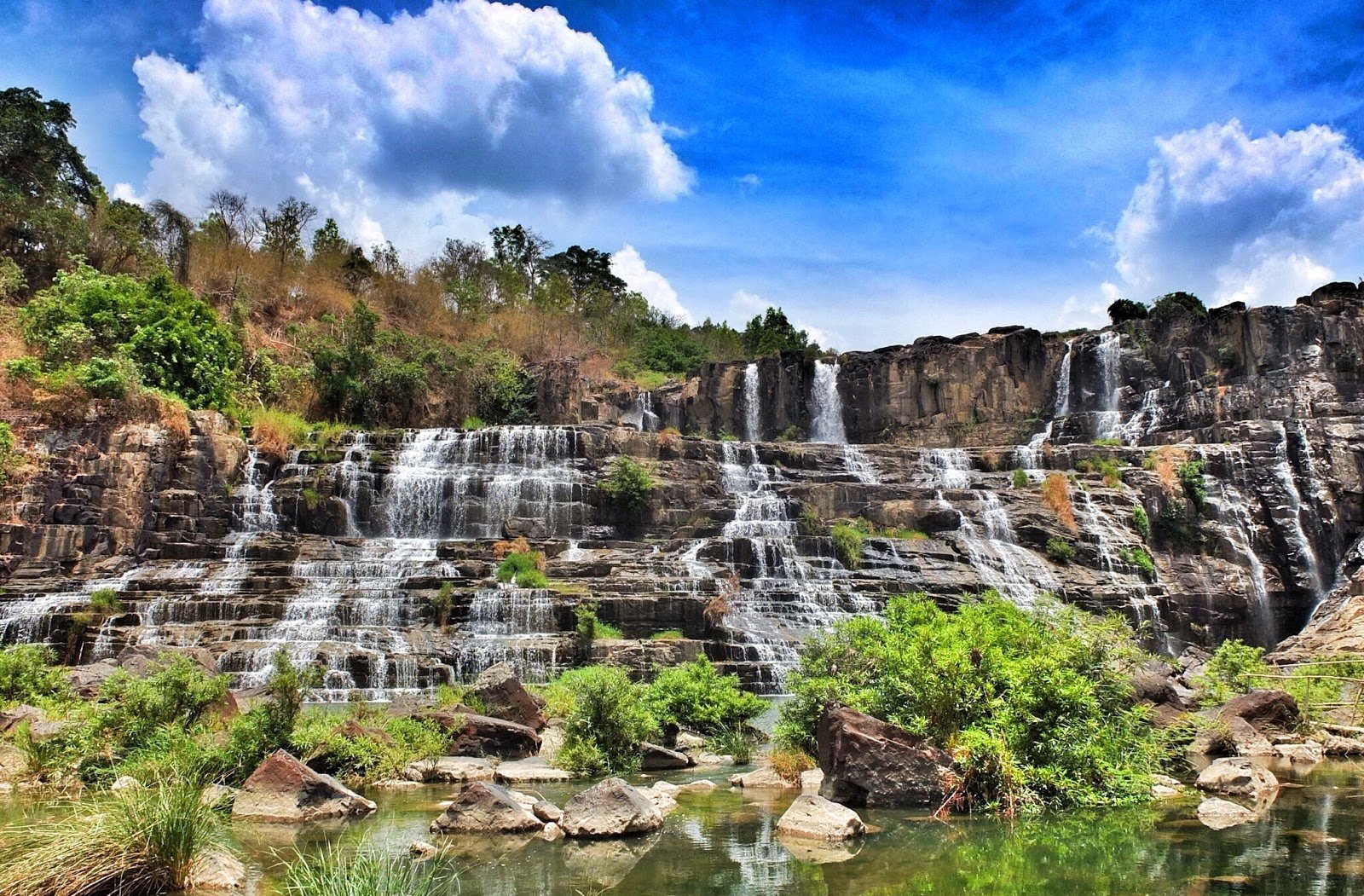
Address: Duc Trong District, Da Lat City
The Lonely Tree
Recently, Da Lat has become famous among young people for its “lonely pine”, a big pine tree standing alone on the riverside. From a distance, it looks lost in a huge field of pink grass, just like a lonely person contemplating the water. However, as you approach closer, you may feel overwhelmed with its height. The lonely pine transforms into a brave soldier standing firm looking over his field.
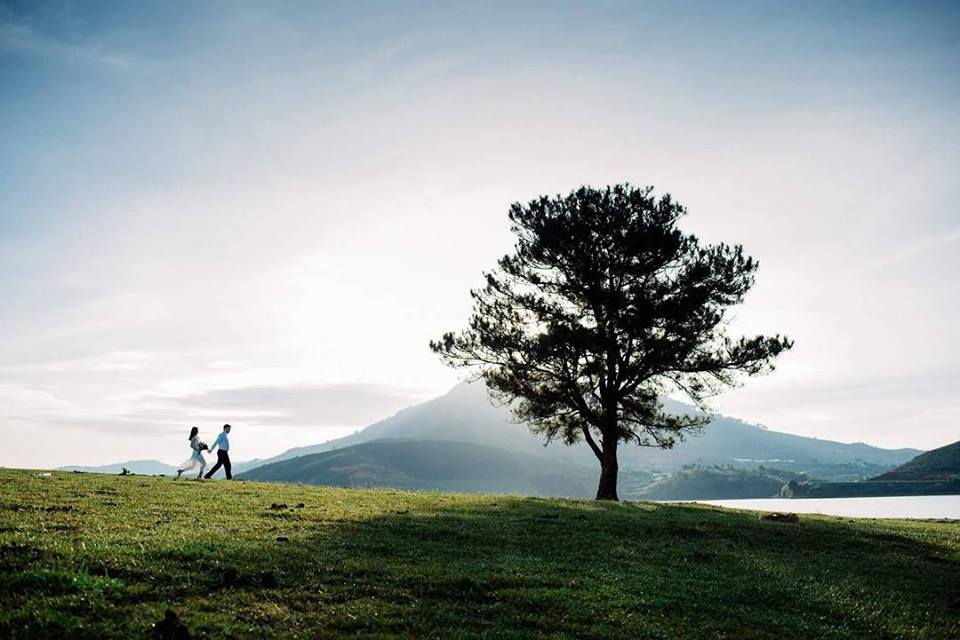
It will take you at least half a day to get back and forth from this location, and the route is not too easy. From Da Lat city, you have to take a bike (since there are trails that do not allow cars), and head to road 722 in the Golden stream area. After you have crossed the Golden Stream bridge, keep going for roughly three kilometers, then look to your right, you will see a trail leading uphill. Follow it! This trail, however, is very slippery during rainy days, so you should check the weather forecast in advance.
Da Lat and Its Architecture
The Cow House Slope
This slope is the steepest incline of Da Lat. Its steepness even encouraged people to craft a staircase to better conquer the hill. I have to admit there isn’t too much to see here but you don’t want to exclude this casual yet unique point of the foggy city from your photo album, do you?
People call this the Cow House Slope because, at the end of the slope, there used to rest a cow house built by the French people. Since 1953, the whole street, including this slope, has been renamed Dao Duy Tu street. This slope is also a (heart splashing) shortcut way to Bao Dai Palace – one of the oldest and most famous palaces of Da Lat.
Address: Dao Duy Tu Street, Da Lat City
Dalat Railway Station
If you visit this station, don’t forget to take a glimpse into its past. First opened in 1932 after 24 years of construction, Da Lat railway (84-kilometers long and 1.4-kilometers in elevation gain) used to serve as one of the main forms of transportation into Da Lat. However, this station is not the one we know today. In 1932, two French architects submitted a proposal for a new station and it was later constructed. The station took six years to finish, built in Art Deco style, incorporating a few characteristics of a Vietnam Central Highland communal house.
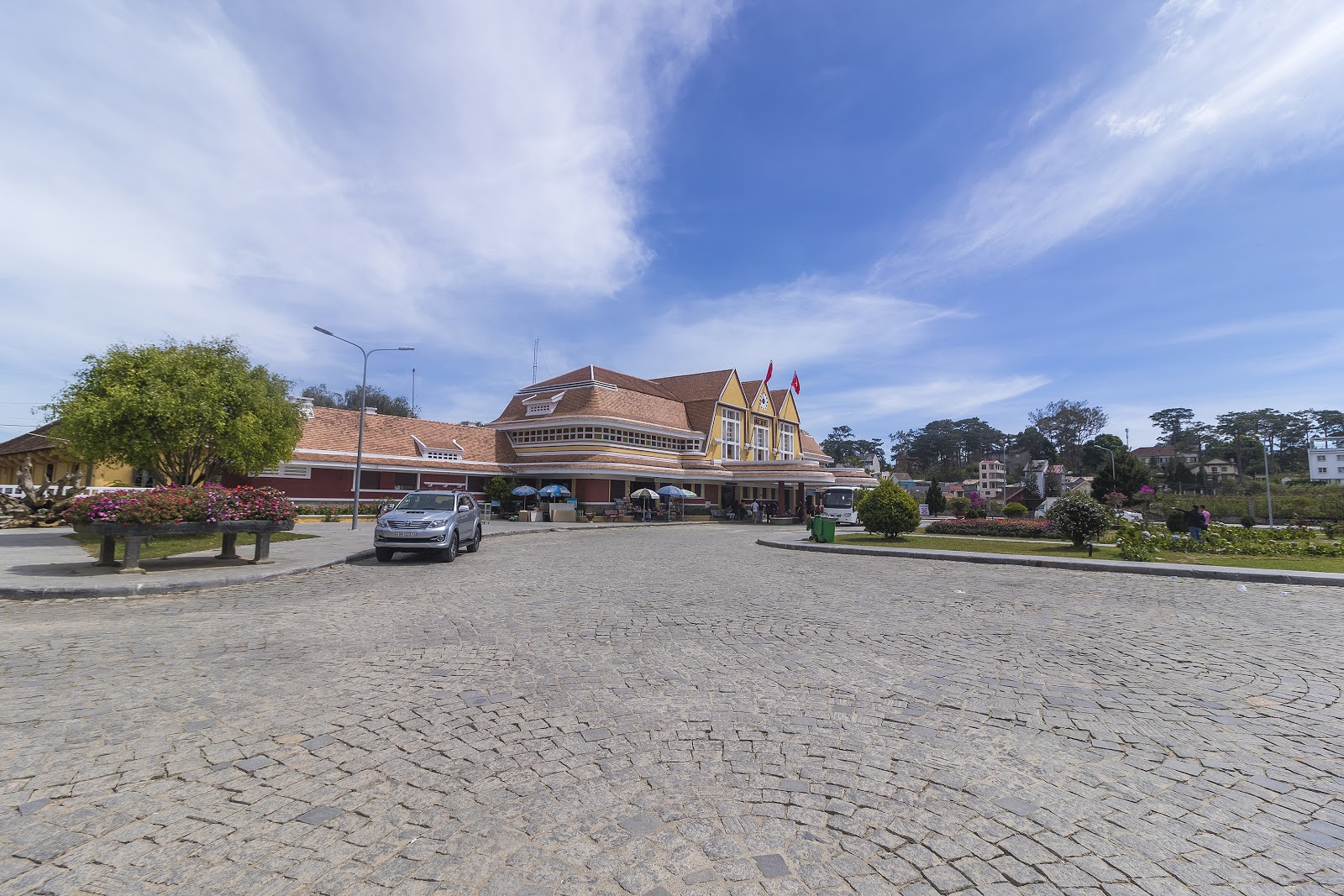
The old station served as a means of transport for civilians, then a weapon courier station, and today it rests as an old gentle tourist transportation system. Only seven kilometers of railway are in operation today, taking travelers from the city center to Trai Mat town, where the pagoda built from recycled items is located.
Address: 01 Quang Trung Street, Da Lat City
Transport fee: 150,000 VND
Hoa Binh Area
Hoa Binh means peace. It is peace that people, from generation to generation, have always prayed for.
Hoa Binh Area is the heart of the city. It is where the famous Da Lat market and night market (also known as the Hell Market) are located. We can find the most casual spots of life of the Da Lat people – the rhythm that is not too chaotic even for a central market. The recently well-known and favorite photography background here is the retrograde newly painted windmill wall, opposite the historic Tung Cafe. Or maybe you can grab a cup of hot cappuccino from The Married Bean cafe, then walk a bit down the road to Xuan Huong lake. If that’s not the perfect afternoon of photos, I don’t know what is. And yet, there are hundreds of things to see and do around this area.
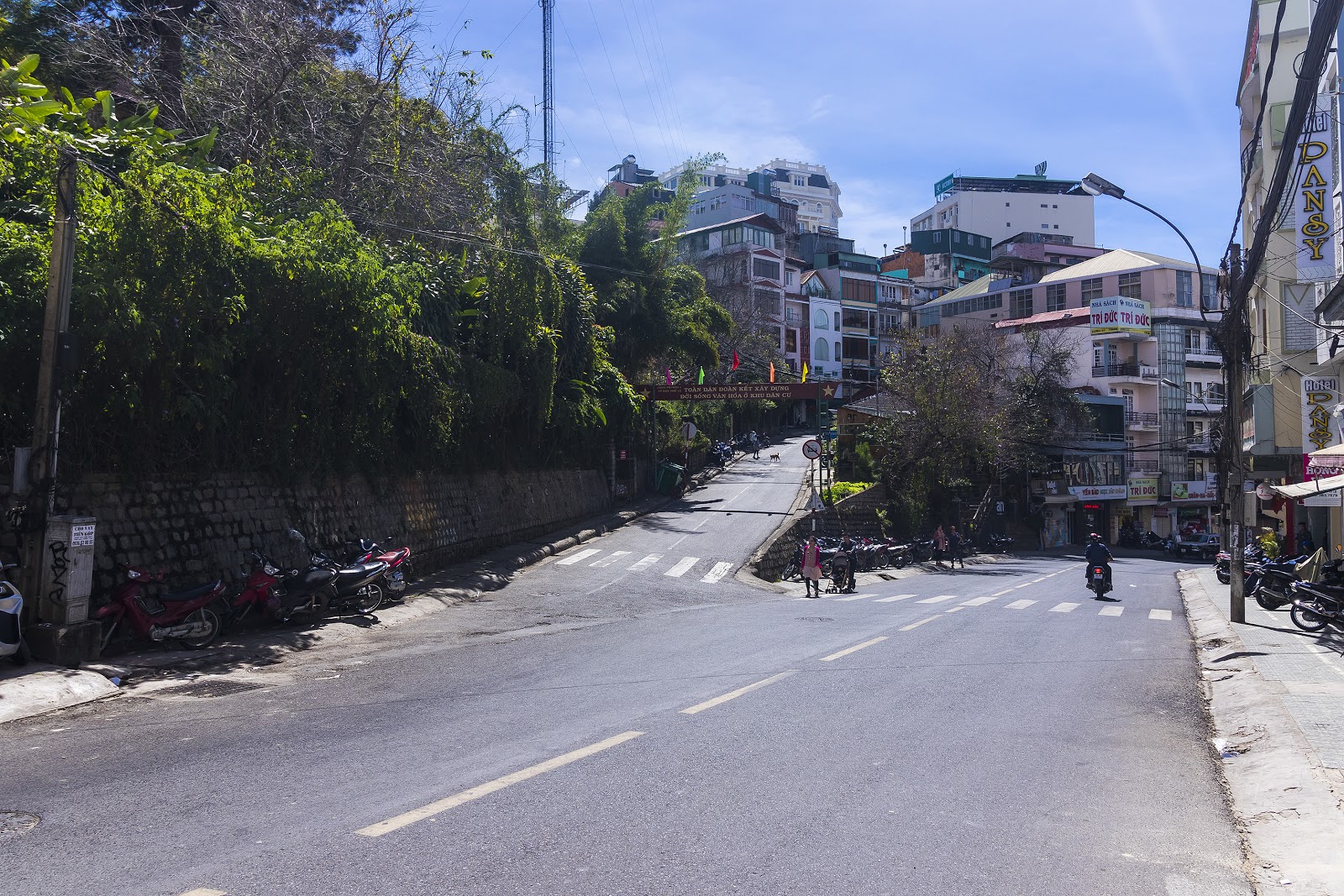
This area is currently being replanned and step by step it’s being reconstructed. It is divided into four main parts (totally 40 hectares), namely: the Hoa Binh Cinema area, the Da Lat Market area, the area by Xuan Huong Lake, and the hill of the old Lam Dong Museum (the museum has been abandoned for decades). We are still looking forward to the new, more modern appearance of Hoa Binh area in the coming decades. For the time being, there won’t be so many changes, and old, nostalgic houses around the market areas will remain.
If you are a fan of art, I highly recommend visiting Tung Cafe to enjoy the flavor of time in your coffee as you sit in the 60-year-old sofas with memories of the past hovering. If you are a food photographer, don’t miss this are and be sure to read this article on some beautiful photogenic food.
Passage of Clay
Let the clay tell you the stories of Da Lat, and let your camera lenses capture the words! Over 1.2 kilometers long, this passage is a huge, brilliant, and incredibly humanitarian sculpture. It is here that the history of Da Lat is picturesquely recorded, from its pristine beginning days to the date Sir Yersin discovered the Langbiang highland in 1893, and finally to the modern days today.
On the clay, you will find the humanitarian and educative stories told in a very clever and sincere way. There is a red Bazan house with its roof upholding the Vietnamese map, which reassures the national ownership over Hoang Sa and Truong Sa islands. Some steps away, you will notice a flat sculpture reminding you of the story: fish eat ants, ants eat fish. You will also notice the lovely song “Ai len xu Hoa Anh Dao” (When you come to the hometown of Cherry Blossom) with its music sheet crafted neatly on the wall. A huge clay Vespa also makes an appearance, as if to recall the lifestyle of Da Lat people ‘once upon a time’.
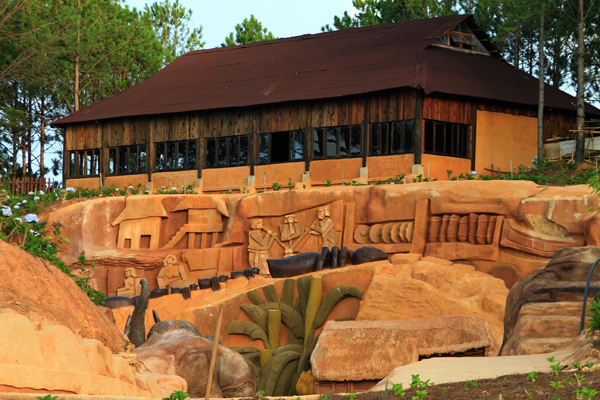
This artwork is worth a lot more study. Yet, if you are only visiting the city for a couple of days, a short walk through will likely give you the whole idea of Da Lat City, and enrich your photo album with such amazingly unique features.
Address: Tuyen Lam Lake, Da Lat City
Fee: 60,000 VND/ adult and 30,000 VND/ child
The Pedagogy College of Da Lat
Built in 1927, this building is among the top 1,000 amazing architecture sites of the world in the 20th century. This school was designed by the talented architect Mocent, it primarily served as a high school under the name Grand Lycee Yersin, schooling the French and wealthy Vietnamese children. Since 1976, this wonderful architectural site has been made into the Pedagogy College of Da Lat.
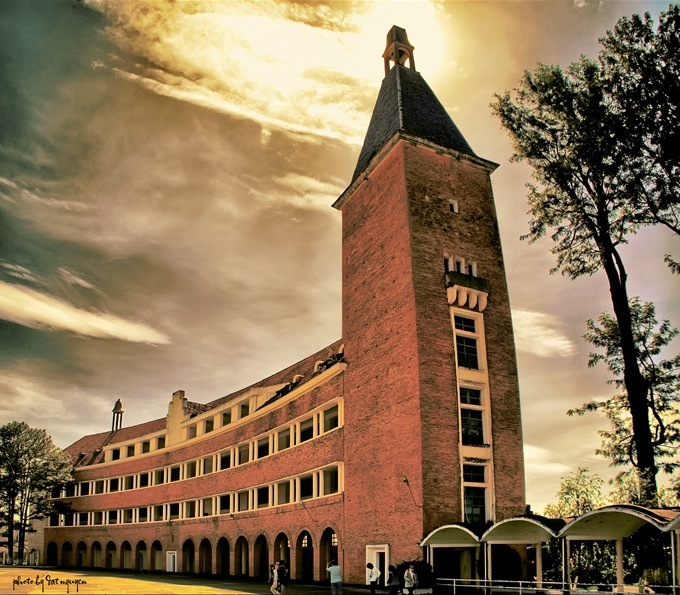
Photographers should never miss this place! It was recognized as part of the national historic heritage and, interestingly, you don’t have to pay a fee to enter. You only need to take your passport/ID card and ask the security team for permission to enter the area.
Pro Tip: Visit after 4 PM to preserve the quiet environment for educational activities.
Address: 29 Yersin Street, Da Lat City
St. Nicolas de Bari Cathedral
On a small hill near Xuan Huong Lake, a Roman-style cathedral with a chicken statue atop the bell tower roof rests for the eyes of visitors and locals alike. It is entrance-free. People usually refer to it as the Chicken Church. This cute nickname speaks much of how familiar this church is in the heart of locals.
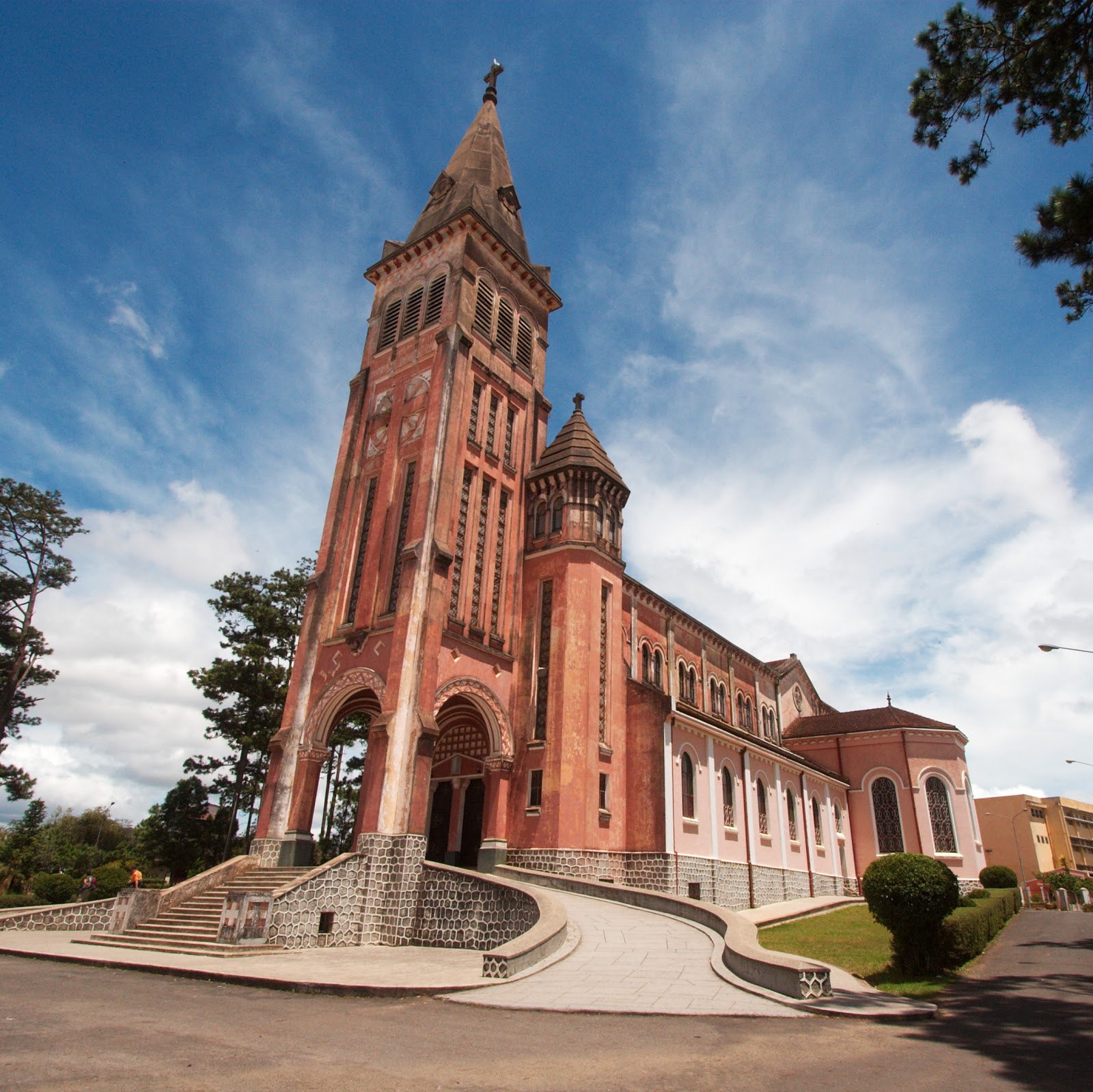
This is the main cathedral of Da Lat, also one of the most typical and oldest architecture sites of the city built under the French time. The cathedral is designed in a cross shape, 65 meters long, 14 meters wide, sporting a 47-meter-high bell tower, and with the main door facing the Langbiang Mountain. The bell tower gives you an amazing vista over the city.
The interior has three parts: a big main room in the middle and two small areas on two sides. You will notice the admirable symmetrical design that makes up the solemnity of this architecture. All of the interior columns are also classic in style, incorporating several creative new features.
Address: 15 Tran Phu Street, Da Lat City
Domain de Marie Convent
This lovely church goes by many names: Vinh Son Church, or Mai Anh Church (for its cherry blossom trees). Renovated in 1940 on the space of 12 hectares, it includes the chapel and two monastery house areas.
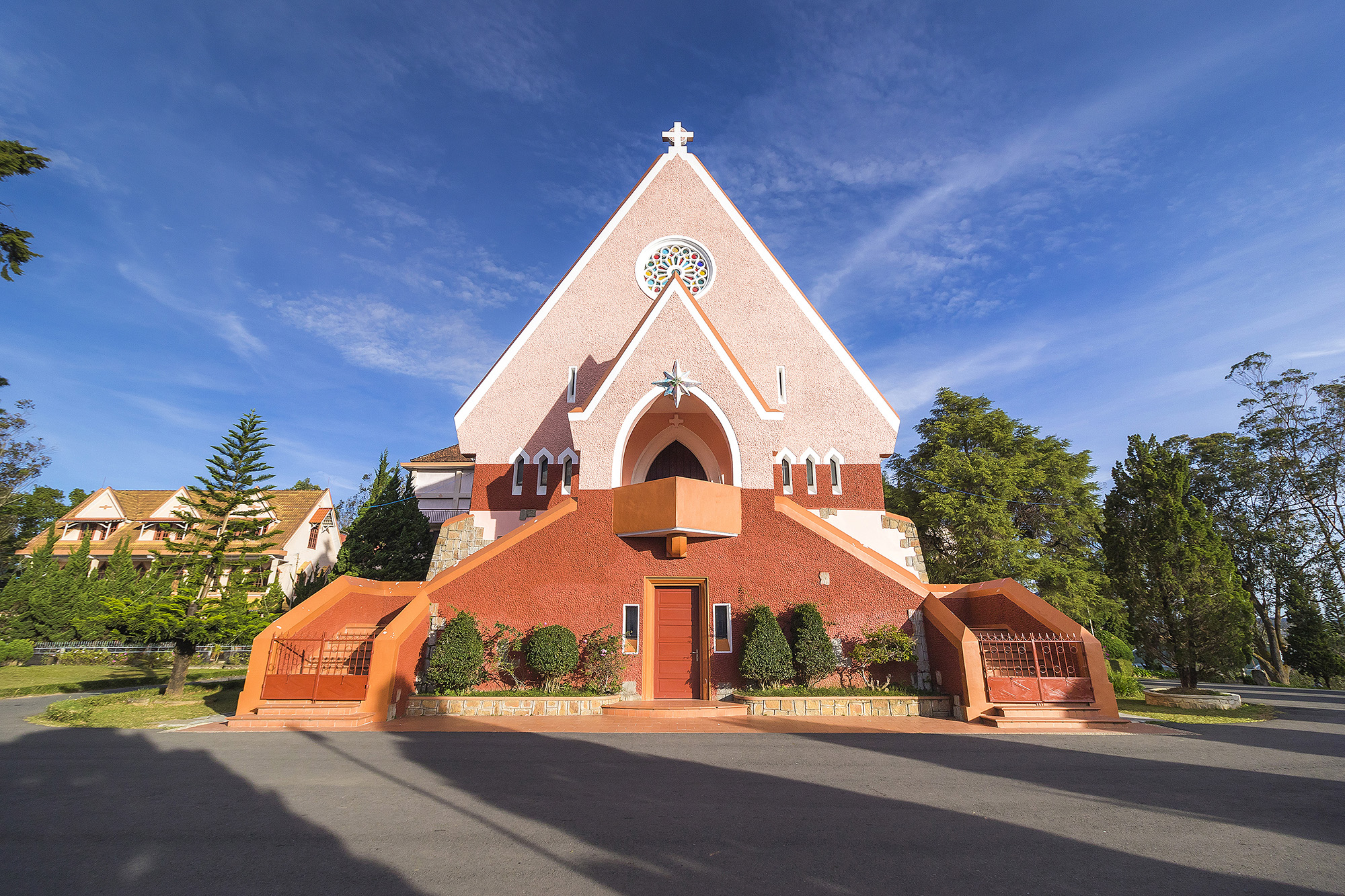
Its design has shifted a wee bit from the classic architectural style. While still respectively holding the cross shape, its weight and length ratio does not follow the classical standard. The door faces southwest. Visit the area today, and besides contemplating the religious architectural beauty, visit the lovely orphanage that shelters lots of children from the surrounding areas. It is here that the orphans are raised to be good civilians, taught basic yet helpful skills such as embroidery, making silk, painting, etc.
Address: 01 Ngo Quyen Street, Da Lat City
Truc Lam Monastery
Sometimes we get too carried away with the rhythm of a busy life, and moments of respite are needed to truly rest. A piece of peace and serenity that allows us to return to our heart and have a better conversation with ourselves is required from time to time… From here we can restore gentleness and celebrate our life for whatever it is. This is where meditation can help.
Buddhism has been long known for meditation. However, during the war times, the living conditions did not support this practice. In the late 20th century, the respectful Buddhist Zen – Master Thich Thanh Tu – made an effort to partake in recovering the meditation practice in Vietnam. Truc Lam Monastery was born during this time, designed by the architect Ngo Viet Thu (who had worked on the Reunification Palace in Saigon). Today, it is not only the biggest Buddhist Monastery in Lam Dong province but also a typical architectural site that encourages calmness inside visitors.
Address: Phung Hoang Mountain, Da Lat City
Linh Phuoc Pagoda
Nothing should be seen as useless trash. And that might be the unspoken motto of this pagoda, home to a large dragon sculpture (49 meters long) built from recycled bottles. Linh Phuoc Pagoda even uses terracotta decoration on most of the building surfaces. This creates a particularly ancient feeling for visitors.
When you visit this site, contemplate the huge 17-meter tall Bodhisattva sculpture that is made from two tons of Immortal flowers (a species of chrysanthemum that lasts forever after it’s dried). The Bodhisattva is the embodiment of compassion. And by taking this flower as the medium of the sculpture, people present their faith to the goodness that lasts.
Address: 120 Tu Phuoc Street, Da Lat City
Da Lat and Its People
The Youth House
The Youth House was built out of the love of people. You might have read the story of Mr. Luan, who witnessed the horrific storm sweeping through the Philippines, crystallizing his call to help unlucky people. You may have also read that The Youth House employs the deaf, bringing deaf people into a social community and teaching them how to make soap, essential oils, and products in order to make a successful living.
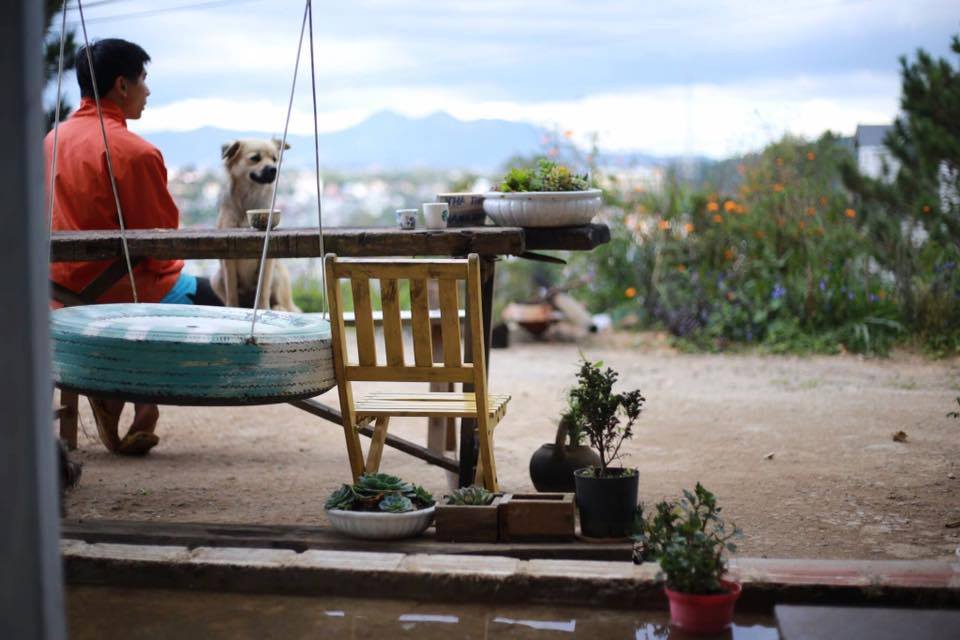
But even if you have read these facts in our other article about coffee shops and their behind-the-scene stories, there is still one more exciting development on the horizon for Mr. Laun! The Youth House is now building a separate home on their farm, with the motto “For the sunset enjoying afternoon tea”. We enjoy afternoon tea and worship the beauty of the sunset with our friends, after a long day working wholeheartedly together.
Mr. Luan is also preparing to renovate his current lovely coffee shop into a place that is suitable for the visually impaired. And the best part is, they need volunteers to help build this new home! Fifty percent of the workforce are current employees, forty percent are Vietnamese people, and ten percent are foreigners. The Youth House is where you can share your unique youth story, with sincere new brothers and sisters who keep seeking to improve themselves for a better society.
Address: 09 Trieu Viet Vuong Street, Da Lat City
X-Q Su Quan
X-Q Embroidery is the name of an embroidery art of Vietnam. While being quite young (first established in the 1990s), X-Q has become one of the most remarkable symbols of Vietnamese embroidery art.
In 1992, the two founders of X-Q made their way to Da Lat to teach locals their art. The village of X-Q Su Quan was born. Today, there are thousands of artisans practicing this art in Da Lat. Visiting X-Q Su Quan, particularly in February, feels as if you have entered an ancient Japanese town, with cherry blossoms lighting up the whole area. The architectural design resembles the calmness of Hue ancient houses.
This serenity (together with the temperate climate) adds to the feeling of a Japanese town. This is why many people refer to X-Q Su Quan as a Japanese village in the middle of “mini Paris”. As a photographer, you now have discovered a lively studio that allows you to capture real-life activities while enjoying such magnificent backgrounds. Located opposite the Dreamy Hill, this village is just as dreamy.
There are six areas of the village, namely:
- The embroidery exhibition
- The food court
- The embroidering factory serving tourist demand
- The area to honor artisans
- The flower garden
- The history telling area
Address: Mai Anh Dao Street, Da Lat City
Entrance fee: 30,000 VND/ adult and free for children
Coffee Farms
You may have heard that Da Lat supplies the best quality Arabica of Vietnam. Some brands, including the exclusive K’ho coffee, are famous internationally for providing premium coffee taste. With a height of 1,500 meters, Da Lat is a wonderful home for growing Arabica. Yet, it is the enthusiasm and the passion of the people that make this city Arabica’s home. Several words cannot paint the whole picture of such an industry of Da Lat. Take a glimpse at our article on best eco-friendly coffee tours in Da Lat to get just a taste.

To travel means to expand your knowledge and enhance your love. I believe that there is so much in this city to discover. A good photographer captures the moments beautifully. An honorable photographer tells the stories thoroughly. We don’t aim to be honored, but there are lots of lovely stories behind the foggy chiffon of Da Lat that are worth your discovery. Or simply if you cannot discover all these places, pick the place that sounds most appealing to you and let’s make the most of it.
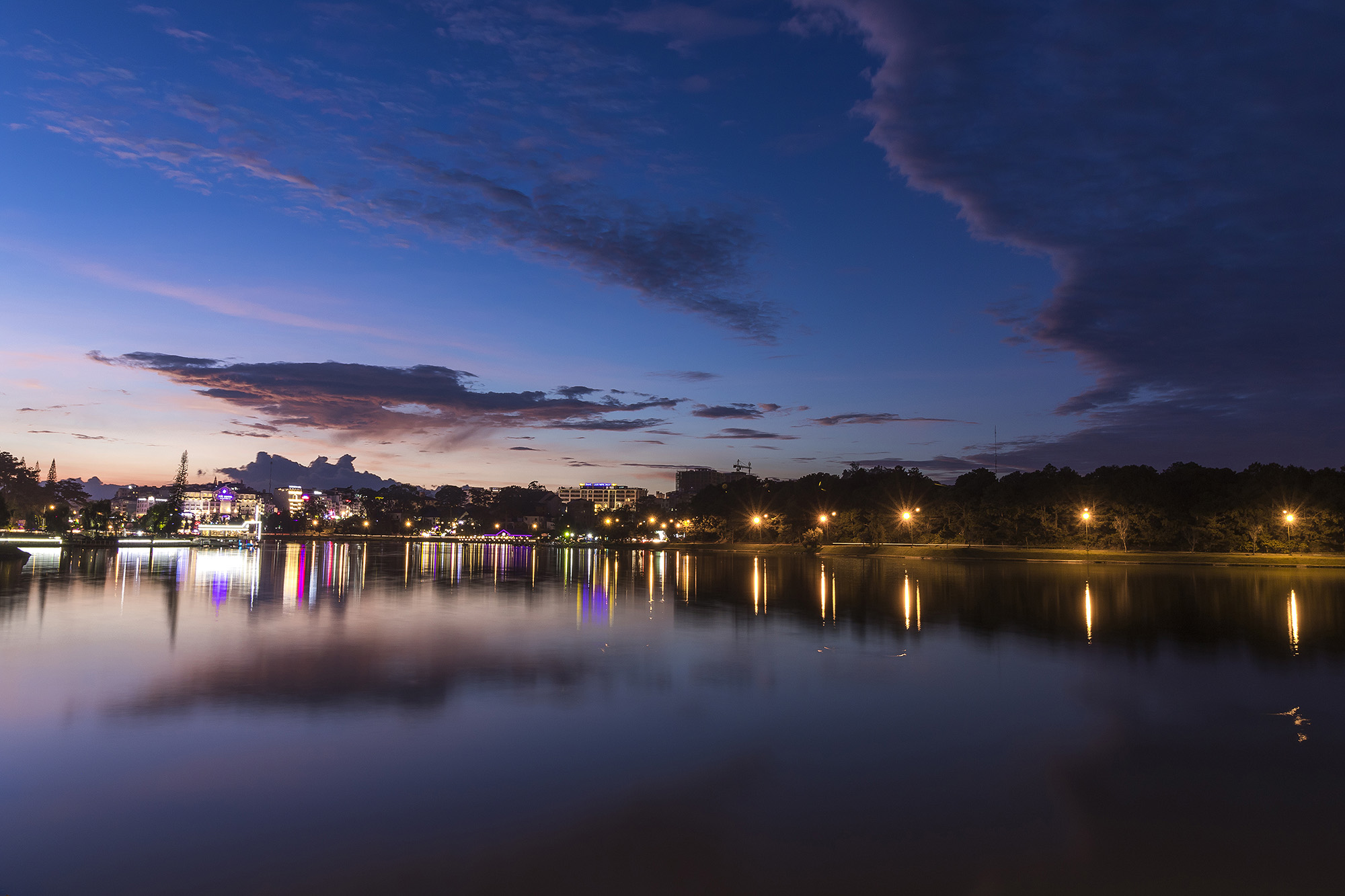
Important links to check out if you’re heading to Da Lat:
Where to Stay in Da Lat, Vietnam’s Most Romantic City – Homestays, Hostels and Hotels
The Best Eco-Friendly Coffee Tours in Da Lat
If you enjoyed reading this article and would like some more fun info about what to see, do and eat (and a bunch of interesting cafes!) in Vietnam, follow us at 4U Trip!
